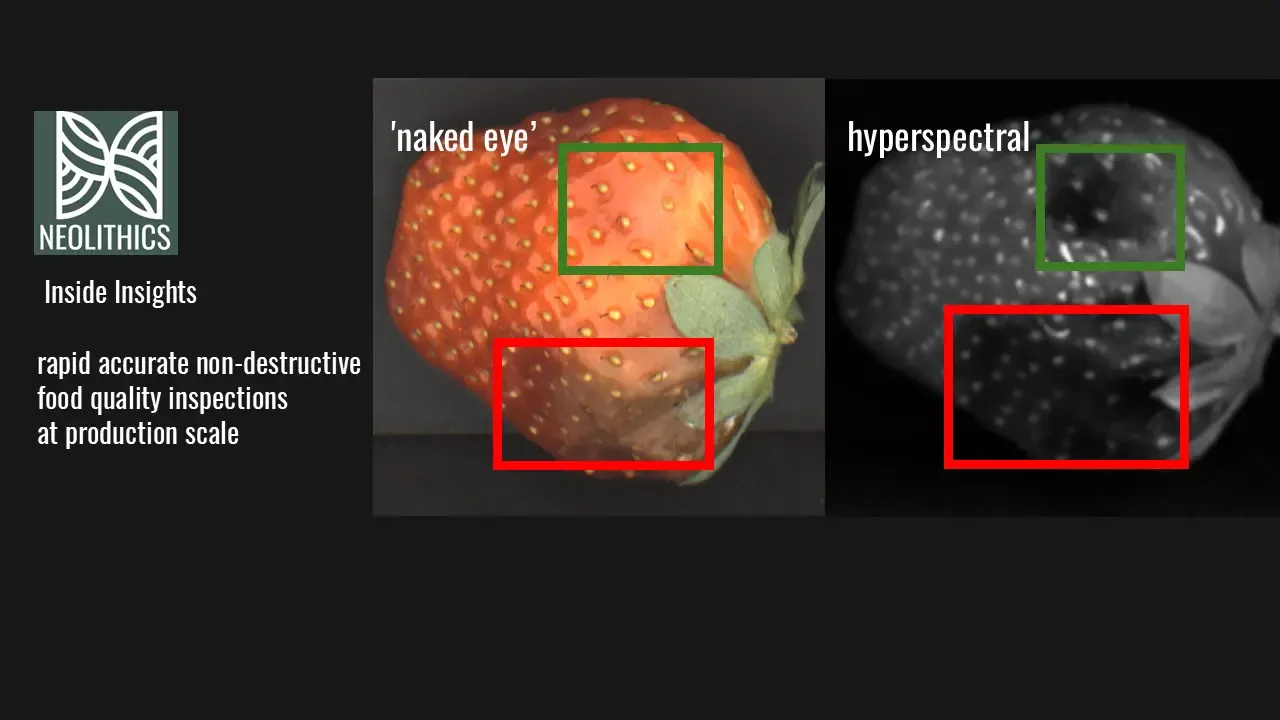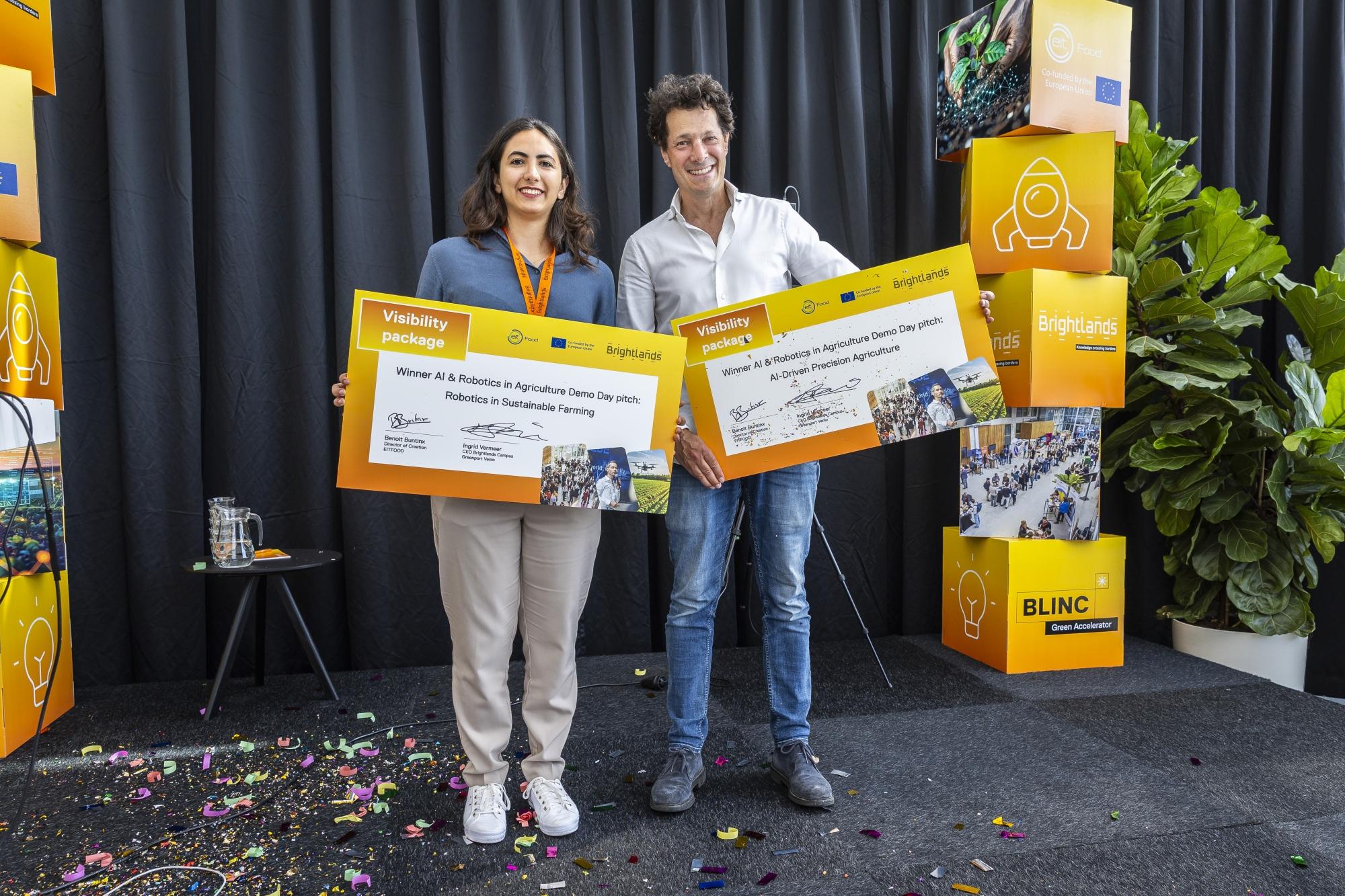World wide, it is estimated that about 40% of all fruits and vegetables are never consumed. A huge waste of food, water, land and energy. Often this waste occurs because somewhere along the chain the quality of produce does not meet specifications during transport, storage or in the store. But what if you could know the exact quality of every piece of fruit or vegetable, even before it goes on its journey? Neolithics is working on this solution.
Neolithics
Startup Neolithics, one of the winners of the AI & Robotics in Agriculture Demo Day organized by Brightlands Campus Greenport Venlo and EIT Food, developed a solution that allows fully automated measurement of the internal and external quality of fruits and vegetables, without damaging products.
"We fully automate inspections so that every piece of fruit or vegetable can be checked without touch."
Looking inside fruits and vegetables without cutting them open
Where quality controls in the industry are now largely manual in small samples, Neolithics offers an alternative that is much more accurate and faster. David Kat, Business Developer of Neolithics, explains: "Currently, for example, only three to five avocados per thousand pounds are checked. To determine quality (subjectively) the avocados are cut open, which is destructive. And the sample is much too small to make real statements. We completely automate inspections so that every piece of fruit or vegetable can be checked without touch.'
Neolithics does this through a unique combination of hyperspectral light and ordinary RGB video. Hyperspectral* light penetrates up to a centimeter and a half deep into the produce, revealing characteristics such as brix (sugar content), acidity, firmness and incipient internal rot even before it is visible on the outside. The RGB camera records the visual characteristics. Combined, those images provide an integral quality check of a product. And so that can be realized of the entire stock.

Faster than a human life
Where a human inspector inspects about 300 kilograms of blueberries per year, Neolithics' innovative technology inspects 6 kilograms per minute, in a table-sized device. In other words, it provides more inspections in one hour than a human can do in a year. For avocados, on the sorting line, the technology inspects 8 tons per hour. Thus, entire product streams can be inspected and sorted.
The measurements are immediately analyzed with artificial intelligence, trained on reference samples of already 20 fruits and vegetables. Each fruit used in the training data was first scanned, then manually cut open and assessed, so AI now knows exactly how internal quality corresponds to what the cameras see. New models can therefore be built in a day.
Less waste, better prices
With their solution, Neolithics aims to tackle food waste worldwide. For example, a grower or trader can decide which blueberries are suitable for a long boat trip to Europe, and which are better sold locally. This way, products are not unnecessarily rejected or discarded after arrival.
David: "If you can measure quality at several points in the chain, you can intervene before things go wrong. You prevent waste, but also improve the price for both farmer and consumer. Because the enormous waste of the food system is now factored into prices.'
"We want to make the food system more efficient, fair and sustainable. The food chain of the future delivers a more consistent product and a better experience."
Transparent food system
Neolithics is currently working with innovative players in the blueberry and avocado chains in South America, the US and the Netherlands. The ambition for the coming years is to be able to track every product from harvest to shopping cart, with quality data.
With better data, according to Neolithics, growers can harvest smarter, logistics parties can cool more optimally, retailers can buy better and consumers can receive better products. David: "We want to make the food system more efficient, fair and sustainable. Not with revolutions, but with proven technology and by building trust step-by-step. The food chain of the future delivers a more consistent product and a better experience.'
* 'Hyperspectral imaging captures light reflected or emitted by a material over many narrow wavelength bands. As different molecules interact with light in characteristic ways, the resulting spectral signature allows us to identify and analyze the composition of the material.'
More to know? Visit the website of Neolithics.
